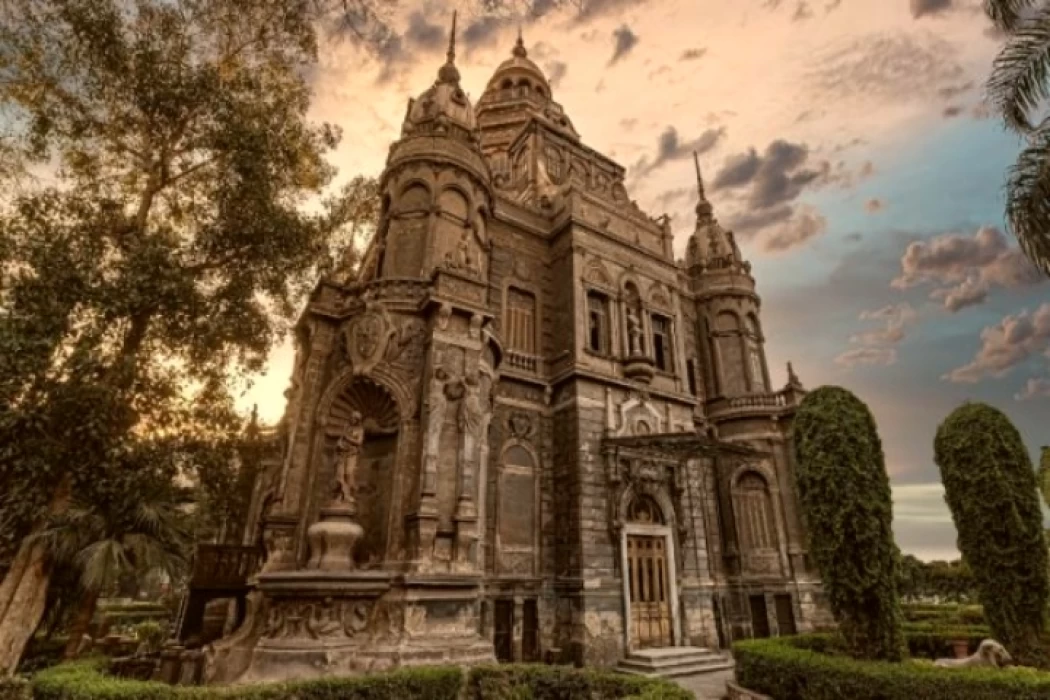
History of Habib Pasha El-Sakakini Palace
The Sacchini Palace was built by Italian architects who came specifically to participate in its construction, and different styles from around the world are represented in it, making it a model of Rococo art.
Sakakini Pasha
The area was named after the construction of the Palace after the owner of the palace, Habib Pasha Sakakini (Gabriel Habib Sakakini) (1841-1923), a native of Damascus in Syria, who arrived in Egypt at the age of 16-17 to take a job at the nascent Suez Canal Company in Port Said. Over the next four years, this Syrian, self-employed for a paltry amount of 3-4 French francs a month, moved to Cairo, eventually, it was for economic development and not allowed for health reasons as said that Habib Sakakini attracted the interest of Khedive Ismail when he was released by shipping on camels parcels of hungry cats to the rat-infested area of the Suez Canal.
In a matter of days, the problem of the rodent epidemic was solved. Due to his ability to solve quickly, innovate, and initiative, the Khedive, using this Syrian Prophet, assigned him the difficult task of completing the construction of the Khedivial Opera. Working under the hand of the Italian architect Pietro Avoscani, Sakkini made a shift system that worked 3 periods in 8 hours, with one period for the next 90 days. He succeeded, and the construction of the Opera House was completed in time for the arrival and visit of European monarchs to Egypt to attend the grand opening ceremony of the Suez Canal on November 17, 1869.
The Khedive was generous in a boundless way. From now on, construction and public works contracts could not fail because they were managed by and in the manner of knives. At the age of 39, Habib Sakakini received the Ottoman title ‘Bey’, and was approved in Constantinople by Sultan Abdul Hamid. Two decades later, on 12 March 1901, Rome's Leon XIII awarded Sacchini the papal title of ‘count’ in recognition of his services to his community.
El Sakakini became one of the wealthy contractors of that time and participated in a prominent role in the work of digging the Suez Canal, and from the nickname by which he was nicknamed (knives), it is said that he made his fortune before working in contracting from the trade of knives and weapons. The palace was built on a plot of land given to him on a land pond called the pond of Sheikh Qamzihi Al-Zahir.
Description of the palace
The palace was built in the Italian style, as it was built by an Italian company commissioned by Habib Pasha Sakakini to be a copy of the palace that he saw in Italy and fell in love with him. he chose for his palace an attractive location radiating from 8 Main Roads, and therefore the Palace became a central point in the region. getting such a location was not easy at that time, but Sakakini Pasha's relationship with the Khedive facilitated this task.
The palace with its cone-shaped domes and its Byzantine design belonging to the Middle Ages now seems out of place amid modern buildings and heavy traffic, and the view of the palace from the outside will never give the right impression of its vast area, as the palace was built on an area of 2698 square meters, it includes more than 50 rooms and reaches a height of five floors the palace contains more than 400 windows and doors and 300 statues, including a bust of Habib Pasha sakkini at the top of the main entrance to the palace and despite the the palace isolated some kind of modern buildings around it.
In 1923, Habib Pasha Sakakini died, regarding his great fortune was divided among the heirs, but his heirs gave the great palace to the government, where one of Sakakini's descendants, who was a doctor, donated his share to the Ministry of Health, which was not the eligible entity to inherit such a palace.
Today, the palace is open to visitors, most of whom are art students, who spend long hours studying the statues and decorations that fill the palace. It is enough to wander through the corridors of the palace and its empty rooms to feel the awe and splendor of the place and smell the aromas of the eternal glory.














